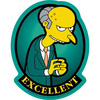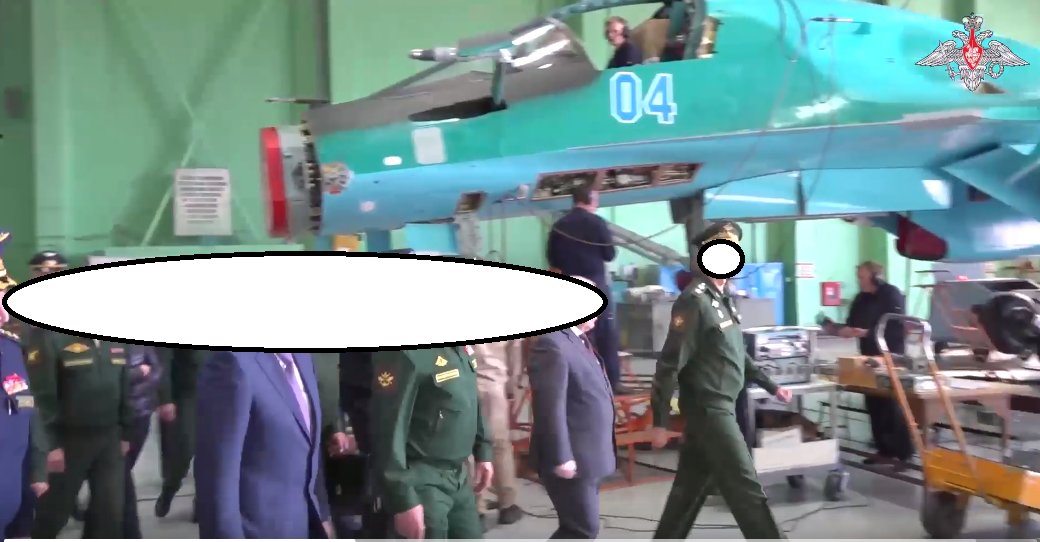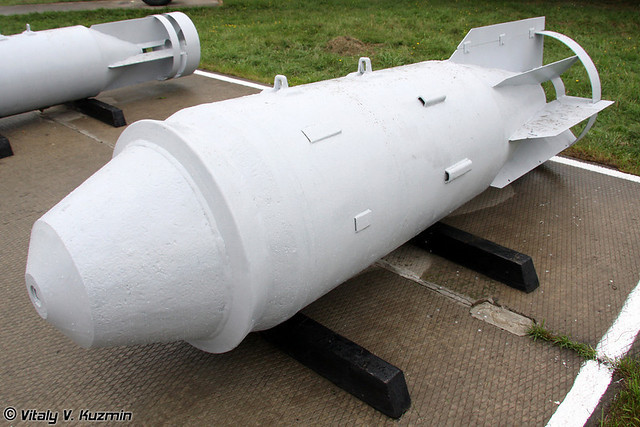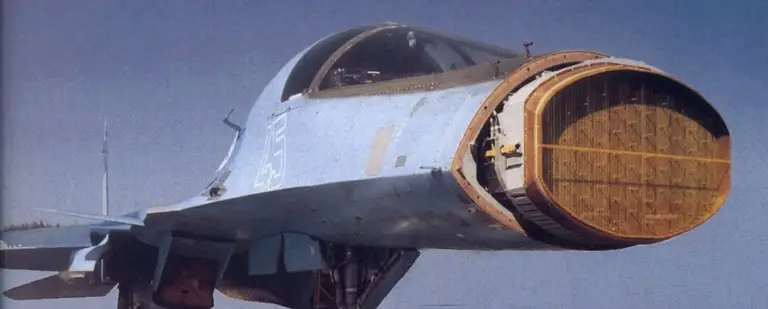They r more needed as interceptors, esp. after few recent crashes of the type.
+46
Krepost
GarryB
Isos
Tsavo Lion
AMCXXL
mnztr
Kiko
mack8
George1
Scorpius
Odin of Ossetia
sepheronx
AlfaT8
lancelot
Robert.V
zepia
Department Of Defense
Sujoy
RTN
Werewolf
lyle6
Arrow
Rodion_Romanovic
Belisarius
caveat emptor
Backman
Podlodka77
magnumcromagnon
gmsmith1985
Mir
ALAMO
miketheterrible
Arkanghelsk
PhSt
LMFS
franco
flamming_python
limb
Cyberspec
x_54_u43
Hole
medo
JohninMK
bandit6
PapaDragon
Russian_Patriot_
50 posters
Su-34 Tactical Bomber: News #2

Tsavo Lion- Posts : 5815
Points : 5771
Join date : 2016-08-15
Location : AZ, USA
- Post n°376
 Re: Su-34 Tactical Bomber: News #2
Re: Su-34 Tactical Bomber: News #2
FYI, only 6 MiG-31s were modified.
They r more needed as interceptors, esp. after few recent crashes of the type.
They r more needed as interceptors, esp. after few recent crashes of the type.

AMCXXL- Posts : 985
Points : 985
Join date : 2017-08-08
- Post n°377
 Re: Su-34 Tactical Bomber: News #2
Re: Su-34 Tactical Bomber: News #2
Tsavo Lion wrote:FYI, only 6 MiG-31s were modified.
They r more needed as interceptors, esp. after few recent crashes of the type.
MiG-31 modified as Khinzal launchers are MiG-31DZ with probe, they cannot be modified to MiG-31BM.
They are only used as a missile launch vector and belong to Long Range Aviation such as the Tu-22M3.
There are 3 squadrons, this is a maximum of 36 if all three squadrons have already been completed.
The total of Mig-31DZ built by the USSR was about 45-46, I don't think there are more than 40 available.
sepheronx, JPJ, zardof, Hole, lancelot and Broski like this post

mnztr- Posts : 2785
Points : 2823
Join date : 2018-01-21
- Post n°378
 Re: Su-34 Tactical Bomber: News #2
Re: Su-34 Tactical Bomber: News #2
AMCXXL wrote:Tsavo Lion wrote:FYI, only 6 MiG-31s were modified.
They r more needed as interceptors, esp. after few recent crashes of the type.
MiG-31 modified as Khinzal launchers are MiG-31DZ with probe, they cannot be modified to MiG-31BM.
They are only used as a missile launch vector and belong to Long Range Aviation such as the Tu-22M3.
There are 3 squadrons, this is a maximum of 36 if all three squadrons have already been completed.
The total of Mig-31DZ built by the USSR was about 45-46, I don't think there are more than 40 available.
Wiki says 101 DZ's are the rest outside Russia? Can the BM be modded to carry Kinzhal? Is it that hard to as a refueling probe?

GarryB- Posts : 39116
Points : 39612
Join date : 2010-03-30
Location : New Zealand
- Post n°379
 Re: Su-34 Tactical Bomber: News #2
Re: Su-34 Tactical Bomber: News #2
even if it's a tank, its size & max. weight is =/> to/than Kinzhal.
The max. combat load the Su-34 can carry=8500kg, Kinzhal payload=480kg
The Kinzhal is 4.8 tons so that is 4,800kgs... but using that logic I guess Mi-26s should carry them too... with a 20 ton payload they could carry about four of them.
The whole point of Kinzhal is its speed and range... and the point of its speed is that it will get through enemy defences... you don't need to overwhelm them with large numbers... or if you do you send waves of slower weapons to bleed the defence and then send a few Kinzhals to crack the hard nuts.
Until western air defences can deal with Kinzhals it makes sense to use them first in a naval situation to sink the AEGIS class cruisers that are supposed to defend their carriers... a single hit on a carrier should stop air operations and then sink the air defence cruisers.... once the air defence cruisers are gone any old anti ship missile will do to take out the rest... so you don't need thousands or even hundreds of MiG-31Ks.
MiG-31 modified as Khinzal launchers are MiG-31DZ with probe, they cannot be modified to MiG-31BM.
To be fair they probably could modify their MiG-31BMs to carry Kinzhal, but they wont simply because MiG-31BMs are more useful as interceptors than as the first stage in a medium range land attack or anti ship semi ballistic rocket.
To match the MiG-31Ks performance the MiG-31BM would have to lose its radar which reduces a lot of weight and would not be able to detect and track a target 2,000km away anyway.
When used against fixed ground targets or ships it is easy enough to ferry three dozen MiG-31Ks around Russian territory for the best vantage to launch an attack.
Lets be realistic... sinking a carrier and three or four AEGIS class cruisers will be enough to blunt and stop any American attack on Russia using its navy...
From a Chinese perspective they could, if they haven't already, develop a Kinzhal equivalent with a large solid rocket booster that they could carry on their Tu-16 bombers... they have plenty and with a solid rocket booster that would launch their Kinzhal up to 20K altitude plus to speeds of Mach 2.5 to mach 3 or even more before it burns out and releases the missile it could have an enormous range and excellent performance...
The point is that making a scramjet powered equivalent... it could be 3 tons where the scramjet fuel without the oxidiser that solid rocket fuel needs so a scramjet powered 3 ton missile (with say 2 tons of fuel) could be the equivalent of a solid rocket with 2 tons of fuel but would need 6 tons of oxidiser.... so it would be an 8 ton missile just for the solid rocket fuel... and more importantly it could throttle up or down to use its fuel efficiently and fly even further...
Russia is only just getting started.... and I would expect a long range SAM and long range AAM with scramjet propulsion would be insane... think about it... if a SAM misses you that is usually it... it never reacquires you... but current lock on after launch missiles like the RVV-MD2 can get a lock in flight to the target and it has a two way datalink so it can send its view to the launch aircraft and the launch aircraft can send information and commands to the missile... a scramjet powered missile can use a throttle to use fuel efficiently... Russia already makes thrust vectoring nozzles for jet engines... they have a datalink that would allow a missile to lose target lock or acquire a lock in flight... you wouldn't even see a mach 10 AAM or SAM...
The problem with most AAMs is that they have tiny fins and control surfaces so their ability to pull hard turns is limited... with thrust vectoring they wont need fins which means less drag and easier to pack into an internal weapon bay... the only issue of course is when the motor runs out of fuel it would lose control whereas something like the R-73 which has thrust deflection also has fins and control surfaces so when the fuel runs out it can still chase you.
Broski and jon_deluxe like this post

AMCXXL- Posts : 985
Points : 985
Join date : 2017-08-08
- Post n°380
 Re: Su-34 Tactical Bomber: News #2
Re: Su-34 Tactical Bomber: News #2
mnztr wrote:
Wiki says 101 DZ's are the rest outside Russia? Can the BM be modded to carry Kinzhal? Is it that hard to as a refueling probe?
wiki say a lot of nonsenses, I doubt most of people can can distinguish a MiG-31DZ from a MiG-31B.
69 MiG-31B were manufactured, of which 15 went to Kazakhstan, so about 54 for Russia, if you add the DZ it gives you almost 100, probably including some prototype of 101.
Probably BM could be modified for Kkinzal or any other missile, but you already have Tu-22M2 and MiG-31K
BM´s are necesry ar interceptors
JPJ likes this post

Tsavo Lion- Posts : 5815
Points : 5771
Join date : 2016-08-15
Location : AZ, USA
- Post n°381
 Re: Su-34 Tactical Bomber: News #2
Re: Su-34 Tactical Bomber: News #2
for ASh missions, Su-34s r better IMO; the VKS may also use Tu-22Ms which could carry up to 3 Kinzhals each, freeing up Su-34s.Until western air defences can deal with Kinzhals it makes sense to use them first in a naval situation to sink the AEGIS class cruisers that are supposed to defend their carriers... a single hit on a carrier should stop air operations and then sink the air defence cruisers.... once the air defence cruisers are gone any old anti ship missile will do to take out the rest... so you don't need thousands or even hundreds of MiG-31Ks.
I wonder if conventional or nuclear tipped Kinzhals can be used against submarines too- they could probably hit the ocean surface at 90deg angle & penetrate at least 100m deep, if not more. Subs don't have BM defense.

TMA1- Posts : 1134
Points : 1132
Join date : 2020-11-30
- Post n°382
 Re: Su-34 Tactical Bomber: News #2
Re: Su-34 Tactical Bomber: News #2
Interesting idea tsovo lion. I have actually heard of the concept of missiles capable of submersion before but I bet the change in medium would have catastrophic effects on even the sturdiest of missiles. Still it is a good idea. I also think developing an otvet type missile for su-34 carriage would be good too.

GarryB- Posts : 39116
Points : 39612
Join date : 2010-03-30
Location : New Zealand
- Post n°383
 Re: Su-34 Tactical Bomber: News #2
Re: Su-34 Tactical Bomber: News #2
for ASh missions, Su-34s r better IMO;
MiG-31Ks are sprinters, and the Kinzhal is a rocket powered weapon so the faster and higher you launch it the further and fast it will go.
They have three dozen MiG-31Ks... a dozen for the northern fleet and dozen for the pacific fleet and a dozen for the black sea/med area.
Launching 12 Kinzhals at a fleet at a time is likely plenty most of the time and more importantly these aircraft fly as far as they can in about 13 minutes and then 13 minutes to fly back... add a 20 minute refuel and rearm stop that means every hour 12 aircraft can probably hit 1.5 targets each... so over a 3 hour attack period the 12 aircraft could launch missiles at ((1.5 x 3) x 12) = 54 launched missiles.... I would say the vast majority of the time that would be too many... so make the attack over a 90 minute period which would result in 27 missiles being launched... which is still probably too many but enough to prove my point... after 27 missiles have been launched the carrier and AEGIS cruisers will be on fire and the other ships can be engaged with not so potent missiles... but not just that... their subs and any other ships with UKSK launchers can be firing Zircon missiles too and Onyx and a range of other weapon types... *
No need for Su-34s or Tu-22M3s to carry such weapons.
the VKS may also use Tu-22Ms which could carry up to 3 Kinzhals each, freeing up Su-34s.
The Tu-22M3Ms will be carrying Kh-32s and probably air launched Zircons instead of Daggers which are probably half the weight.
I wonder if conventional or nuclear tipped Kinzhals can be used against submarines too- they could probably hit the ocean surface at 90deg angle & penetrate at least 100m deep, if not more. Subs don't have BM defense.
Water does not compress, so if you want to hit a sub that is underwater then a subsonic missile like a Kh-101 with a flight range of 5,000km makes sense... and just replace the conventional payload with two or three small depth charges in the 2 Kiloton nuke range... three 152mm nuclear artillery shells would do fine... as the cruise missile arrives at the designated target zone it could slow down to fairly low flight speed of maybe 200-300km/hour and start flying in a circle around the estimated position of the sub and as it flys around it can drop three x 50kg 152mm nuclear artillery shells into the water spaced out 1km apart in a loose triangle... the resulting explosions would be devastating to anything nearby underwater.
I also think developing an otvet type missile for su-34 carriage would be good too.
For the nuclear depth charge role a nuke version of otvet could have significantly more range... a small rocket booster and little turbojet engine to deliver the warheads thousands of kms away wouldn't be that difficult.
* a note about my maths... my estimate of 1.5 missile launches per plane per hour is based on the fact that a lot of the time the MiG-31K wont have to fly the full 750km distance it can fly at top speed to launch its missile so for closer targets than 2,750km from the airfield the MiGs operate from they can fly more launches per hour.
Last edited by GarryB on Sat Sep 09, 2023 11:05 am; edited 1 time in total

Isos- Posts : 11313
Points : 11283
Join date : 2015-11-06
- Post n°384
 Re: Su-34 Tactical Bomber: News #2
Re: Su-34 Tactical Bomber: News #2
Mig-31 can quickly change its position in Russia. If they face a navy in the pacific they will move all of them to make huge attack at once. They won't count on kinzhal caracteristics but still do overwhelming attacks.
12 here, 12 there is for peace time. In war time the one who brings the more hardware and hits first wins.
12 here, 12 there is for peace time. In war time the one who brings the more hardware and hits first wins.
GarryB, zardof, Sprut-B and Broski like this post

GarryB- Posts : 39116
Points : 39612
Join date : 2010-03-30
Location : New Zealand
- Post n°385
 Re: Su-34 Tactical Bomber: News #2
Re: Su-34 Tactical Bomber: News #2
The MiG-31K has an inflight refuelling probe and could probably carry underwing external fuel tanks if it is being transferred from one base to any other... it can certainly move around Russia rather faster than any naval task group could be put together...
And another factor is that the Zircon missile achieves very similar performance from a missile probably half the weight of the Kinzhal because of its scramjet engine.
The shift from propeller to jet engine propulsion was very important for most aircraft and weapons... the addition of scramjet will be just as profound.
And another factor is that the Zircon missile achieves very similar performance from a missile probably half the weight of the Kinzhal because of its scramjet engine.
The shift from propeller to jet engine propulsion was very important for most aircraft and weapons... the addition of scramjet will be just as profound.
Big_Gazza, zardof, Sprut-B and Broski like this post

Isos- Posts : 11313
Points : 11283
Join date : 2015-11-06
- Post n°386
 Re: Su-34 Tactical Bomber: News #2
Re: Su-34 Tactical Bomber: News #2
They will see signs that naval group are coming to attack days before it happen. More than enough for any plane to be transfered anywhere around Russia.
GarryB likes this post

GarryB- Posts : 39116
Points : 39612
Join date : 2010-03-30
Location : New Zealand
- Post n°387
 Re: Su-34 Tactical Bomber: News #2
Re: Su-34 Tactical Bomber: News #2
Exactly... which is not something they could do if all of their missiles were ship or sub based.
Their ships and subs can obviously carry more missiles and can carry them around the world which is just not practical with MiG-31Ks, but they offer different advantages where the MiG-31K is the sprinter than can get anywhere pretty fast... they know its range and its performance... if they needed to shift them from one side of Russia to the other they could do it rather quickly with inflight refuelling aircraft along the route to top them off along the way... they could have supersonic hops to speed the transit up in places if they needed to.
Their ships and subs can obviously carry more missiles and can carry them around the world which is just not practical with MiG-31Ks, but they offer different advantages where the MiG-31K is the sprinter than can get anywhere pretty fast... they know its range and its performance... if they needed to shift them from one side of Russia to the other they could do it rather quickly with inflight refuelling aircraft along the route to top them off along the way... they could have supersonic hops to speed the transit up in places if they needed to.

Krepost- Posts : 694
Points : 696
Join date : 2021-12-07
- Post n°388
 Re: Su-34 Tactical Bomber: News #2
Re: Su-34 Tactical Bomber: News #2
GarryB, franco, JPJ, George1, Big_Gazza, zardof, Sprut-B and like this post

TMA1- Posts : 1134
Points : 1132
Join date : 2020-11-30
- Post n°389
 Re: Su-34 Tactical Bomber: News #2
Re: Su-34 Tactical Bomber: News #2
Anyone have any info on the radar of this aircraft? Not a whole lot to go around compared to bars or irbis. Didnt thr same company that designed the mig31 radar develop the one for this aircraft?

thegopnik- Posts : 1727
Points : 1729
Join date : 2017-09-20
- Post n°390
 Re: Su-34 Tactical Bomber: News #2
Re: Su-34 Tactical Bomber: News #2
tweet says su-34 will carry from 2 to 3.
franco, Big_Gazza, Sprut-B, LMFS, Hole and Broski like this post

Hole- Posts : 10810
Points : 10788
Join date : 2018-03-24
Age : 48
Location : Scholzistan
- Post n°391
 Re: Su-34 Tactical Bomber: News #2
Re: Su-34 Tactical Bomber: News #2
Sprut-B, LMFS and Broski like this post

ALAMO- Posts : 6804
Points : 6896
Join date : 2014-11-25
- Post n°392
 Re: Su-34 Tactical Bomber: News #2
Re: Su-34 Tactical Bomber: News #2
TMA1 likes this post

Isos- Posts : 11313
Points : 11283
Join date : 2015-11-06
- Post n°393
 Re: Su-34 Tactical Bomber: News #2
Re: Su-34 Tactical Bomber: News #2
Hole wrote:
The next in line? FAB-3000.
No need for if they have a good precision and penetrating capability.
The more precise it is the smaller the warhead you need. Even 1500isn't needed.
A fab-250 will destroy any vehicles or building easily.
Bigger bombs are usefull only if you hit deep or the target is very large.
They should develop smaller fab-100 and fab-50 to be able to carry more per aircraft than just two fab-500.
owais.usmani likes this post

Sprut-B- Posts : 429
Points : 435
Join date : 2017-07-29
Age : 31
- Post n°394
 Re: Su-34 Tactical Bomber: News #2
Re: Su-34 Tactical Bomber: News #2
Isos wrote:No need for if they have a good precision and penetrating capability.
The more precise it is the smaller the warhead you need. Even 1500isn't needed.
A fab-250 will destroy any vehicles or building easily.
Bigger bombs are usefull only if you hit deep or the target is very large.
They should develop smaller fab-100 and fab-50 to be able to carry more per aircraft than just two fab-500.
More explosives power is always a good thing. The FAB-3000 could be the perfect tool to quickly replace the hideous Bendera statue in Lviv with a magnificent, sprawling pond.
LMFS likes this post

TMA1- Posts : 1134
Points : 1132
Join date : 2020-11-30
- Post n°395
 Re: Su-34 Tactical Bomber: News #2
Re: Su-34 Tactical Bomber: News #2
The three new pods are being used right now in the SMO I bet and the SAR pod with 1m2 clarity out to 300km would be particularly useful. Does anyone know if it has target tracking capabilities or is it solely kit for intel? In all the articles I read it never mentioned tracking capabilities.

ALAMO- Posts : 6804
Points : 6896
Join date : 2014-11-25
- Post n°396
 Re: Su-34 Tactical Bomber: News #2
Re: Su-34 Tactical Bomber: News #2
Shoigu visits Chkalov plant.
https://t.me/DDGeopolitics/84151
Quite interesting.
First, he called a plane "a workhorse" of a whole war.
Planes do 4-5 flights each day.
Seems that the procedures has been mastered, and now planes are being modernized while repairing.
At least 3 pcs at final assembling phase simultaneously.
https://t.me/DDGeopolitics/84151
Quite interesting.
First, he called a plane "a workhorse" of a whole war.
Planes do 4-5 flights each day.
Seems that the procedures has been mastered, and now planes are being modernized while repairing.
At least 3 pcs at final assembling phase simultaneously.
sepheronx, franco, psg, mack8, Big_Gazza, zardof, AMCXXL and like this post

AMCXXL- Posts : 985
Points : 985
Join date : 2017-08-08
- Post n°397
 Re: Su-34 Tactical Bomber: News #2
Re: Su-34 Tactical Bomber: News #2
[Su-34 NVO] So we have a Su-34 B/n 04 Blue. The factory is not empty.
A Su-34 with B/n Red war stars undergoing standard change overhaul.
We have at least 3 or 4 unpainted Su-34s and 1 or 2 painted.
https://vk.com/video-133441491_456271506?list=98072cc0de262b47f8
[Su-34 NVO]. The delivery of the new Su-34 fighter-bombers and the modification of those in service with the troops are carried out on schedule, the contract for 2024 (?) is completed!!! Not the one from 2023??
[Su-34 NVO] By rereading. The delivery of new Su-34 aircraft and modification of those already in service with the troops is carried out. As expected. The 2024 GOZ will be higher than the 2023 GOZ.
[S-70 Okhotnik drone] Novosibirsk aircraft factory named after V.P. Chkalov. The issue of R&D work to create a long-range drone was discussed at a meeting held by Russian Defense Minister Sergei Shoigu. 2023 contracts

A Su-34 with B/n Red war stars undergoing standard change overhaul.
We have at least 3 or 4 unpainted Su-34s and 1 or 2 painted.
https://vk.com/video-133441491_456271506?list=98072cc0de262b47f8
[Su-34 NVO]. The delivery of the new Su-34 fighter-bombers and the modification of those in service with the troops are carried out on schedule, the contract for 2024 (?) is completed!!! Not the one from 2023??
[Su-34 NVO] By rereading. The delivery of new Su-34 aircraft and modification of those already in service with the troops is carried out. As expected. The 2024 GOZ will be higher than the 2023 GOZ.
[S-70 Okhotnik drone] Novosibirsk aircraft factory named after V.P. Chkalov. The issue of R&D work to create a long-range drone was discussed at a meeting held by Russian Defense Minister Sergei Shoigu. 2023 contracts

franco, George1, dino00, mack8, ALAMO, Sprut-B, Hole and like this post

ALAMO- Posts : 6804
Points : 6896
Join date : 2014-11-25
- Post n°398
 Re: Su-34 Tactical Bomber: News #2
Re: Su-34 Tactical Bomber: News #2
In the background, Chkalov's director is saying that "this 4 pieces are planned for November this year".
4 pcs a month isn't bad at all.
4 pcs a month isn't bad at all.
franco, AMCXXL, Hole, Broski and Belisarius like this post

Arkanghelsk- Posts : 3641
Points : 3647
Join date : 2021-12-08
- Post n°399
 Re: Su-34 Tactical Bomber: News #2
Re: Su-34 Tactical Bomber: News #2
https://en.topwar.ru/227686-rossijskaja-kompanija-proizvoditel-peredala-minoborony-rf-novuju-partiju-samoletov-su-34.html
The Russian manufacturing company handed over a new batch of Su-34 aircraft to the Russian Ministry of Defense
A new batch of Su-34 bomber aircraft was handed over to the Ministry of Defense of the Russian Federation by the manufacturing company. The aircraft were manufactured at the Novosibirsk Aviation Plant named after. V.P. Chkalov United Aircraft Corporation (UAC, part of the Rostec State Corporation).
At the same time the defense minister calls for increased production
More important IMO is to streamline PVO protocols before firing on VKS aircraft, maybe some kind of update to IFF
And to use dispersion and some kind of hangar system to protect from FPV/plastic drones with smaller munitions
The Russian manufacturing company handed over a new batch of Su-34 aircraft to the Russian Ministry of Defense
A new batch of Su-34 bomber aircraft was handed over to the Ministry of Defense of the Russian Federation by the manufacturing company. The aircraft were manufactured at the Novosibirsk Aviation Plant named after. V.P. Chkalov United Aircraft Corporation (UAC, part of the Rostec State Corporation).
At the same time the defense minister calls for increased production
More important IMO is to streamline PVO protocols before firing on VKS aircraft, maybe some kind of update to IFF
And to use dispersion and some kind of hangar system to protect from FPV/plastic drones with smaller munitions

TMA1- Posts : 1134
Points : 1132
Join date : 2020-11-30
- Post n°400
 Re: Su-34 Tactical Bomber: News #2
Re: Su-34 Tactical Bomber: News #2
Nice image of the V004 radar. Always been interested. I bet they have improved the computers to give greater resolution in mapping modes and in ground scanning mode when it hugs the earth. I wonder if pilots use the system much. I bet they definitely do at night with those kinds of missions. Also the three pods are awesome. I wonder what the capabilities are of the radar pod. It has long range and pretty fine detail as well. I wonder if it is just intel or if it can track and mark targets. In this conflict those pods are extremely important.
|
|
|





